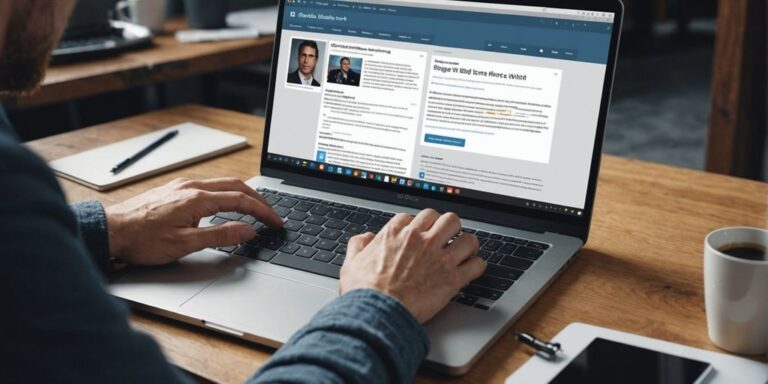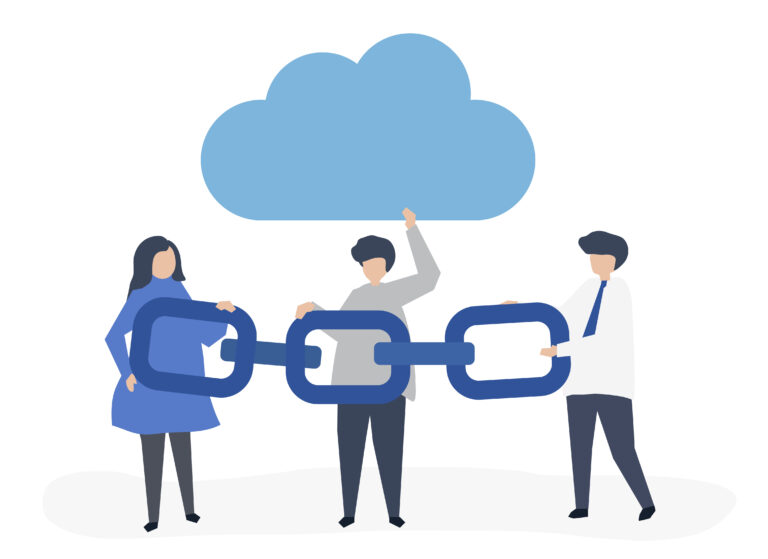What is Backlinks?
Backlinks, also known as inbound links, are links from one website to another. They are crucial for search engine optimization (SEO) because they serve as votes of confidence for your site. The more high-quality backlinks you have, the better your chances of ranking higher on search engine results pages.
Key Takeaways
- Backlinks are links from one website to another, often called inbound links.
- They are essential for SEO, acting as votes of confidence for your site.
- High-quality backlinks can help your site rank higher on search engines.
- There are different types of backlinks, including DoFollow and NoFollow links.
- Effective backlink strategies include guest posting, content marketing, and social media engagement.
Understanding Backlinks and Their Importance
Definition of Backlinks
Backlinks are links on other websites that point to your website. In the world of SEO (Search Engine Optimization), they’re like votes of credibility from one site to another. Backlinks are crucial for SEO because they help search engines understand the popularity and relevance of your site.
Role of Backlinks in SEO
Backlinks play a significant role in SEO by acting as endorsements for your content. When a reputable site links to your page, it signals to search engines that your content is valuable. This can lead to higher rankings in search results, making your site more visible to users.
Impact on Search Engine Rankings
The more backlinks your web pages have, the more likely they are to rank for relevant search queries. Search engines revisit popular pages more often, and they may discover your content faster if you get backlinks from popular pages. This can significantly boost your site’s traffic and visibility.
Backlinks are essential for improving your site's discoverability and ranking in search engine results.
Types of Backlinks
DoFollow vs. NoFollow Links
Backlinks can be categorized into DoFollow and NoFollow links. DoFollow links pass SEO value from one site to another, helping to improve search engine rankings. On the other hand, NoFollow links do not pass SEO value but can still drive traffic and provide visibility.
Natural vs. Manual Backlinks
Natural backlinks occur organically when other websites link to your content because they find it valuable. Manual backlinks, however, are acquired through deliberate efforts like outreach or guest posting.
High-Quality vs. Low-Quality Backlinks
High-quality backlinks come from reputable, authoritative websites and can significantly boost your SEO. Low-quality backlinks, often from spammy or irrelevant sites, can harm your SEO efforts.
Understanding the different types of backlinks is crucial for developing an effective SEO strategy. Each type has its own role and impact on your website's performance.
How to Acquire Backlinks
Guest Posting
Guest posting is a great way to get backlinks. By writing articles for other websites, you can include a link back to your own site. This not only helps with SEO but also gets your content in front of a new audience. It’s a win-win situation.
Content Marketing
Creating high-quality content that others want to link to is another effective strategy. This can include blog posts, infographics, videos, and more. The key is to make your content so valuable that others naturally want to link to it.
Social Media Engagement
Engaging with your audience on social media can also help you earn backlinks. Share your content on platforms like Facebook, Twitter, and LinkedIn, and encourage your followers to share it as well. The more your content is shared, the more likely it is to earn backlinks.
Building backlinks is one of the most challenging tasks in SEO, but with the right strategies, it can be done effectively.
Best Practices for Link Building
Choosing the Right Link Building Platform
Selecting the right platform for link building is crucial. A good platform can help you find high-quality websites to link back to your content. Look for platforms that offer a variety of tools and resources to make the process easier.
Avoiding Black Hat SEO Tactics
It’s important to avoid black hat SEO tactics, such as exchanging money for links or using automated programs to create links. These practices can lead to penalties from search engines. Instead, focus on creating valuable content that people naturally want to link to.
Monitoring and Analyzing Backlinks
Regularly monitoring and analyzing your backlinks is essential. Use tools like Semrush’s Backlink Audit to check for potentially harmful backlinks. This helps ensure that your link profile remains healthy and free from spammy links.
Consistent monitoring and analysis of your backlinks can help you maintain a strong and healthy link profile.
Tools for Managing Backlinks
Managing backlinks is crucial for maintaining a strong SEO profile. Using the right tools can make this task much easier and more effective.
Common Backlink Mistakes to Avoid
Overusing Anchor Text
One common mistake is using the same anchor text too often. Search engines may see this as spammy and it can hurt your rankings. Instead, use a variety of anchor texts that look natural and relevant to the content.
Ignoring Link Relevance
Another error is ignoring the relevance of the links. Links from unrelated sites can be seen as low-quality and may not help your SEO efforts. Always aim for links from sites that are relevant to your niche.
Neglecting Backlink Diversity
Relying on a single type of backlink can also be problematic. A diverse backlink profile is more natural and is favored by search engines. Mix it up with different types of links from various sources.
When building backlinks, avoid anything that looks low-quality, spammy, or like an obvious link scheme.
Additional Tips
- Avoid exchanging money, goods, or services for follow links.
- Don’t use automated programs to create links to your site.
- Stay away from link exchanges like “link to me and I’ll link to you.”
Conclusion
Backlinks play a crucial role in the world of SEO. They act like votes of confidence from one website to another, helping search engines determine the value and relevance of your content. By understanding and utilizing backlinks effectively, you can improve your website’s visibility and ranking on search engine results pages. Remember, quality matters more than quantity, so focus on building high-quality backlinks from reputable sources. With the right strategy, backlinks can significantly boost your online presence and drive more traffic to your site.
Frequently Asked Questions
What are backlinks?
Backlinks are links from one website to another. They’re also known as inbound or incoming links and are important for SEO because they act like votes of confidence for your site.
Why are backlinks important for SEO?
Backlinks are crucial for SEO as they help search engines determine the credibility and relevance of your website. More high-quality backlinks can improve your search engine rankings.
What’s the difference between DoFollow and NoFollow links?
DoFollow links pass on SEO value from one site to another, helping with search engine rankings. NoFollow links, on the other hand, do not pass on SEO value but can still drive traffic.
How can I get more backlinks to my website?
You can get more backlinks through guest posting, creating valuable content, and engaging with people on social media. Building relationships with other website owners also helps.
What should I avoid when building backlinks?
Avoid using black hat SEO tactics like buying links or overusing anchor text. Also, make sure your backlinks are relevant and come from diverse sources.
How do I monitor my backlinks?
You can monitor your backlinks using tools like Google Search Console, Ahrefs, or SEMrush. These tools help you track your backlinks and analyze their quality and impact on your SEO.





